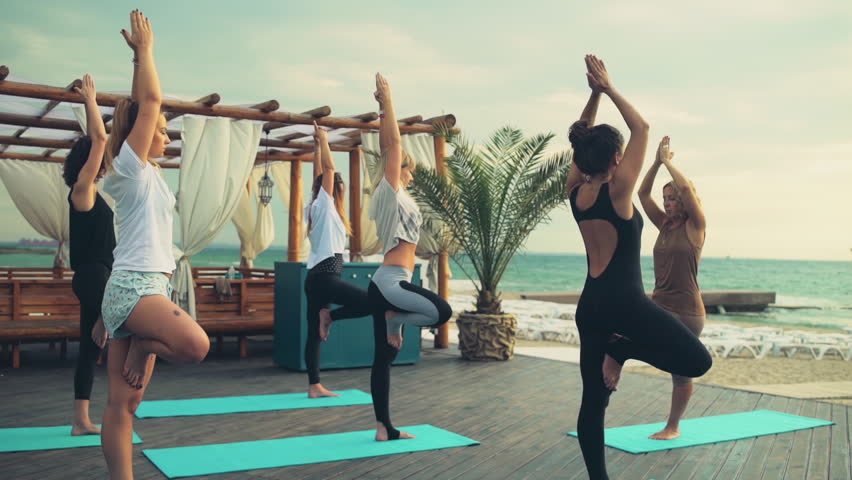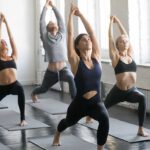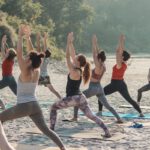Have you ever thought about doing yoga at home? It may sound difficult as it will require you to spare some time every day from your daily schedule and you are probably not sure about where to start. Fear of injuries can also stop you from doing yoga.
Now that you are reading this article then it already means that you have started to make up your mind about doing yoga at home. Regular yoga practice at home will not only improve your physical health but has major benefits for your mental health.
For the majority of us, finding the time to practice yoga regularly can be challenging. Our busy schedules prohibit us from fulfilling our fitness and spiritual goals. Start practicing yoga if you wish to improve your health and get started.
If you regularly practiced yoga outdoors or went out to yoga classes before the pandemic, home yoga practice becomes a must for you because it will help you sustain a yoga practice in the long term.
As a beginner, if you want to start your yoga practice at home, you should start with some basic yoga asanas for which you don’t need to enrol in classes. To get started, decide on a time that works for you to practice yoga. Invest in a good-quality yoga mat so that you don’t feel discomfort while sitting and lying down postures.
5 Tips to Practice Yoga at Home
Practicing yoga at home is an excellent choice if you have trouble finding time for classes or wish to practice more frequently but your finances don’t allow it.
1. Start with Five – Poses, Minutes and Breaths
To begin your yoga at home, start by making sustainable and small commitments instead of making big commitments that may seem difficult. Although, there’s no set minimum limit for yoga practice and every posture and breath counts. Start small – do as much as you can and what feels good to you.
2. Set a time convenient for you
You can choose any time of the day to practice yoga, whether in the morning or evening. While practicing in the morning is considered best since the energy levels are the highest, doing yoga in the evening can relieve you from the stress gathered during the day.
3. Choose a comfortable corner or place
You can either choose a room or a quiet place in your home which is large enough for you to roll your mat comfortably and practice yoga without disturbance. Just make sure that your yoga space is clean and airy. It shouldn’t have large furniture or any sharp objects in close proximity.
4. Practice Empty Stomach
You should do yoga either on an empty stomach or after atleast 2 to 3 hours of eating a meal. Don’t practice yoga right after having a meal.
5. Wear Simple and Light Yoga Wear
Wear comfortable and fitted clothing so that you don’t get tangled in your clothes while doing your yoga stretches. Avoid wearing any jewellery and make-up for a comfortable and carefree practice.
5 Simple Yoga Asanas to Start Your Practice at Home
You can stay healthy, more productive, relaxed, and joyful all day long by doing yoga every day. By practicing yoga at home, you not only stay content but also spread happiness and good vibes to your family. The best part about practicing yoga at home is that you can practice it whenever you choose in the comfort of your own home.
Here’s a list of 5 yoga asanas that you can do at home safely without worrying about injuries –
1. Sukhasna – The Easy Pose
Sukhasana or the Easy Pose, is a posture that you’re probably already employing subconsciously. The benefits of practicing mindfulness in Sukhasana include calmness, inner peace, relief from mental stress and fatigue, and an overall improvement in posture and balance.
- Cross your legs at the shins and sit down on the floor.
- Maintain a long, straight spine that is parallel to the neck and head.
- Maintain the palms-down position with the hands on the knees.
- Close your eyes, take a deep breath in and out, and hold for two to three minutes.
- After that switch sides, lowering the leg that was on top. You can repeat it if you wish.
2. Tadasana – The Mountain Pose
Tadasana or the Mountain Pose is the foundation for all standing poses. It reduces anxiety by enhancing breath control and giving you a sense of security and grounding.
- Stand straight and aligned with your weight evenly distributed in your feet precisely beneath your hips.
- Your fingers should be interlocked with the palms facing up as you raise your arms above your head.
- Inhale as you do this while gradually raising your body to your toes.
- You can slightly roll your shoulders back to let your chest expand.
- Fix your gaze at a point at some distance.
- Try to maintain your balance on your toes and hold this position for 3 to 4 counts while breathing naturally.
- Exhale as you come out of the pose by placing your heels back on the floor and lowering your hands to your sides.
- Repeat this posture 5 – 10 times.
3. Balasana – The Child Posture
The Child’s Pose, or Balasana, has a direct effect on the neurological and lymphatic systems, reducing tension and exhaustion and maintaining mental peace.
- Kneel with your legs together.
- Sit back and rest your hips on your heels.
- Gently bend forward until your forehead hits the floor and your chest rests on your thighs.
- Try to do this pose without raising your hips. For assistance, you can use a pillow for the first few times.
- If you require more support, you can stretch your arms out in front of you or maintain them by your sides with the palms facing up.
4. Setubndasana – The Bridge Pose
Setubandasana or the Bridge Pose helps treat conditions like migraines, sleeplessness and anxiety. Additionally, it works wonders for lowering blood pressure and preventing backaches.
- Bend your knees while lying on your back.
- Knees should be hip-width apart and the feet should be placed directly under the knees.
- Your palms should be facing down on the sides of your body.
- Gently inhale and elevate your hips while maintaining your arms and feet firmly fixed on the ground. Don’t move your knees.
- Do not strain your back while you keep pulling the hips up higher by using your butt muscles. Hold for 5 counts, then release your breath and slowly lower your hips until you are back in the beginning position.
- Repeat 5-10 times.
5. Savasana – The Corpse Pose
Savasana or the corpse pose helps you become aware of your breathing, which reduces stress and blood pressure, improves focus and mental health, and prevents depression.
- Lay on your back with your knees slightly apart and your arms about 6 inches away from your body with your palms facing up.
- Your head should be in a calm and comfortable position.
- As soon as you feel comfortable in this position, don’t move.
- Try not to doze off while you inhale deeply and relax your body and mind.
To exit Shavasana –
- Slowly move your fingers and toes, and stretch your body with your arms extended behind your head.
- Expand your torso and gently move your head left and right.
- Turn to any one side and get up into a cross-legged sitting position.
Some more yoga asanas to try while doing yoga at home –
- Malasana or the Garland Pose
- Tadasana or the Tree Pose
- Uttanasana – the Inversion Pose
- Baddha Konasana – the Butterfly Pose
- Bhujangasana – the Cobra Pose
- Adho Mukha Svanasana – the Downward-Facing Dog
Pros and Cons of Doing Yoga at Home
Pros
- It saves time since you don’t have to drive anywhere or struggle to find safe parking for your vehicle.
- You can practice yoga whenever you want since you are not wound with a schedule.
- No one’s watching you and hence, you have reason to be self-conscious.
- You won’t be getting into any comparisons which usually happens in a group class.
- You can take a break in child pose whenever you feel exhausted during the practice and no one will force you to continue even when you feel like giving up.
Cons
- You won’t have a yoga teacher to correct your alignment.
- You may need to create a space for you in the home for your daily practice without disturbing the harmony of the home.
- You may find it hard to advance your practice and you may end up getting stuck at the basics.
Bottomline
Home yoga practice is a consistent habit that includes yoga as a part of your daily routine. It could entail practicing yoga asanas, meditation, breathing techniques, or simply reciting Sanskrit mantras. Some people decide to do yoga in the morning, while others choose to do it in the evening or just before going to sleep. Yoga practice at home is very individual; it is shaped and determined by your preferences, objectives, and requirements. It can be practised in your house or outside in your yard whenever your schedule permits.



